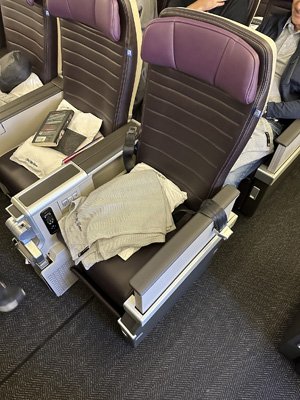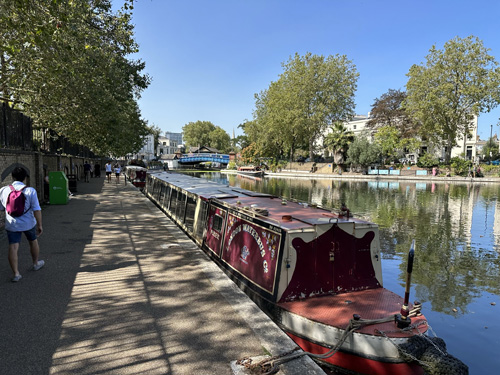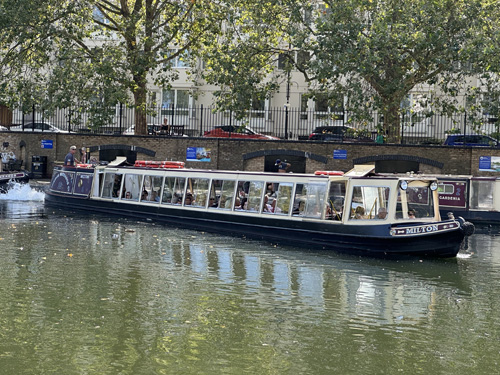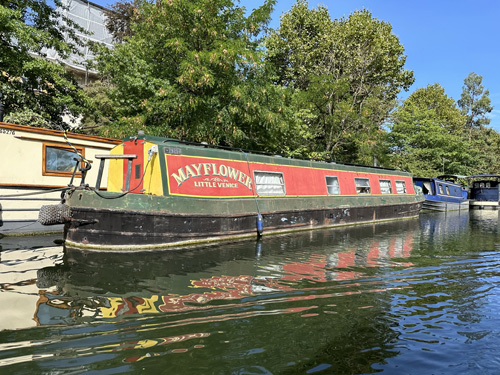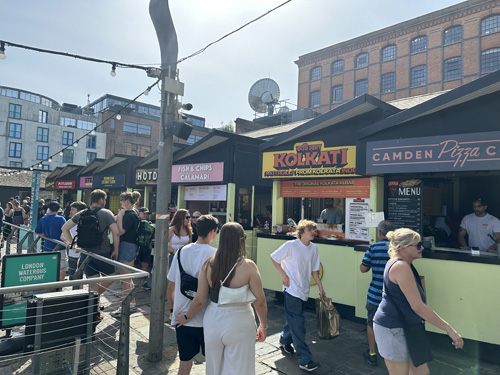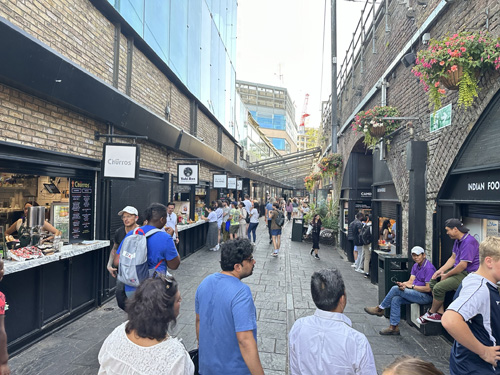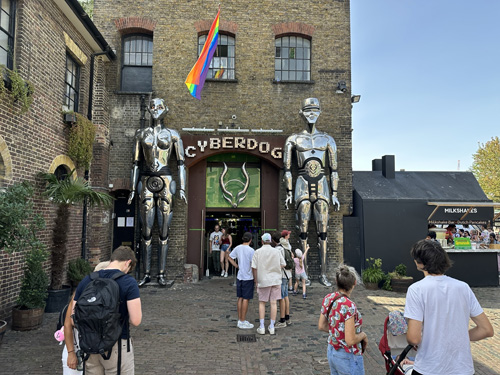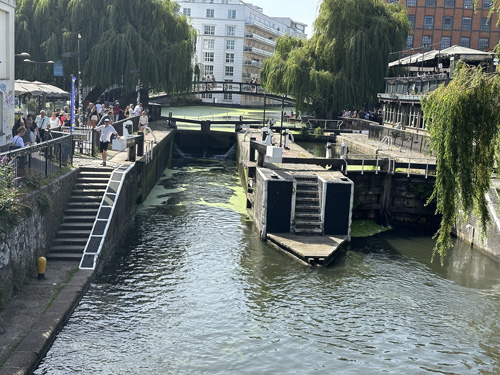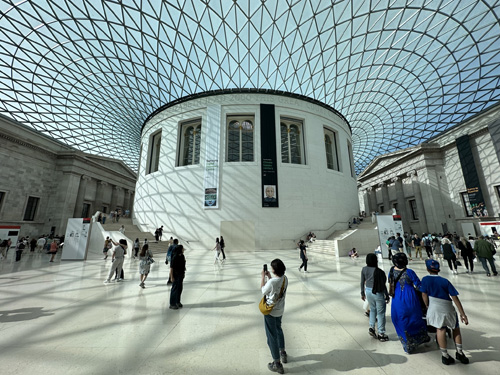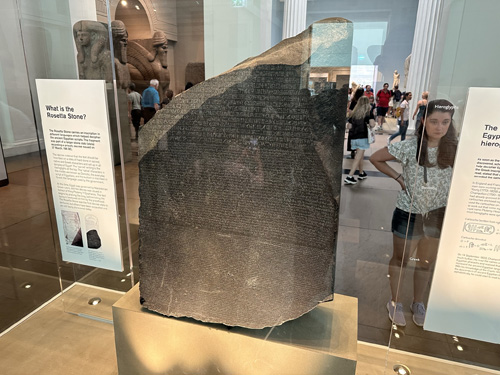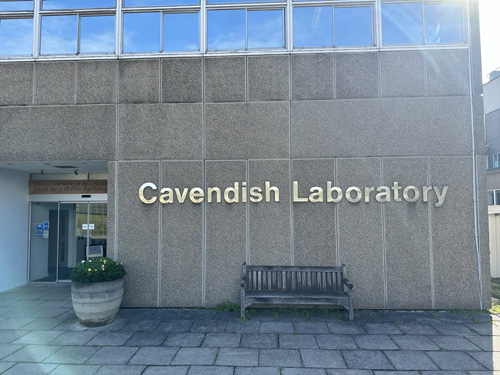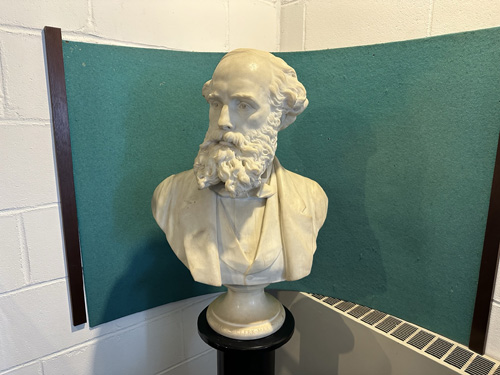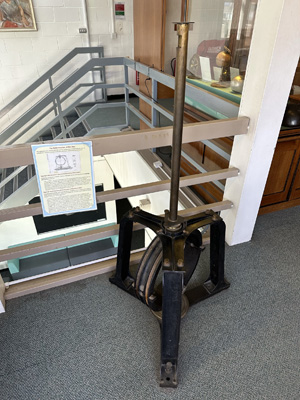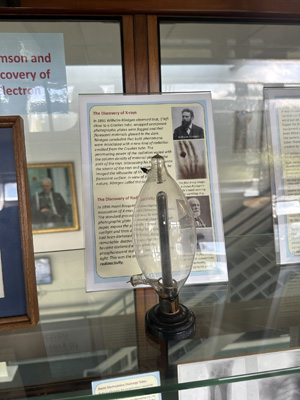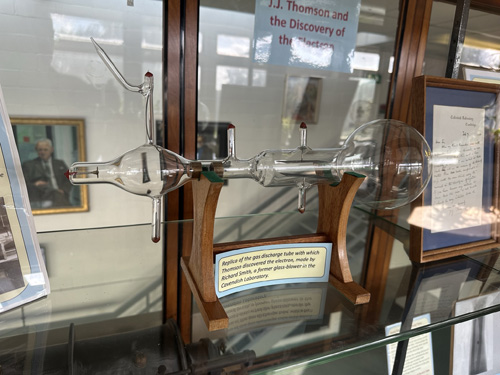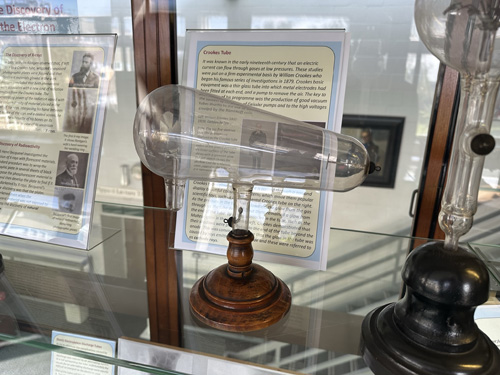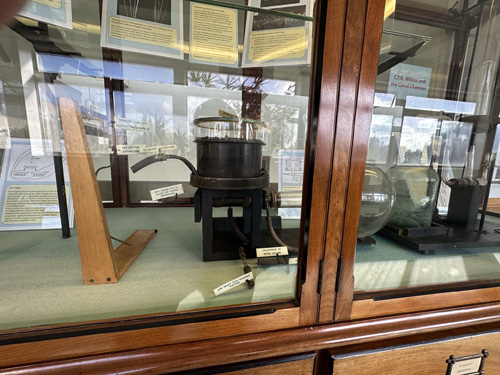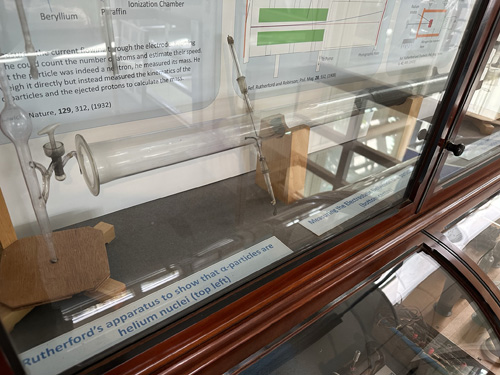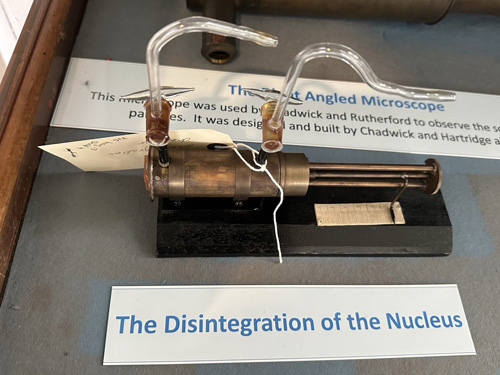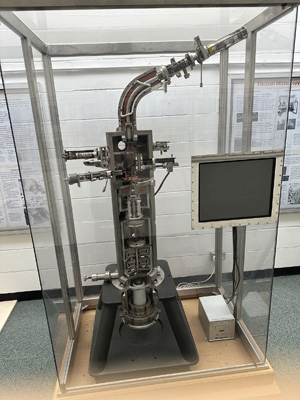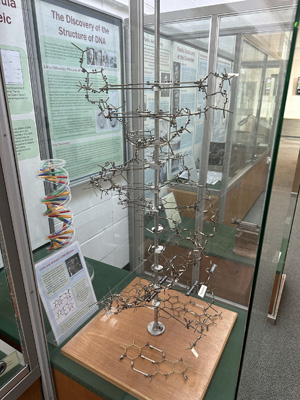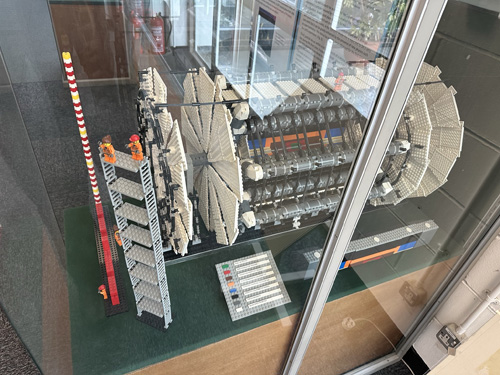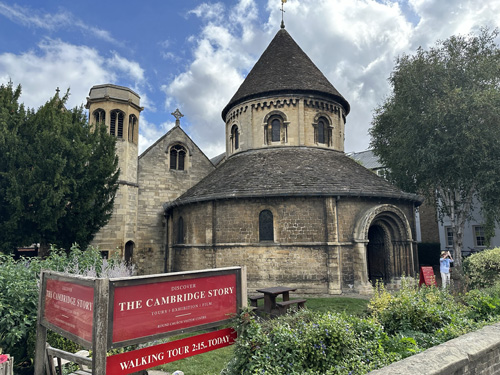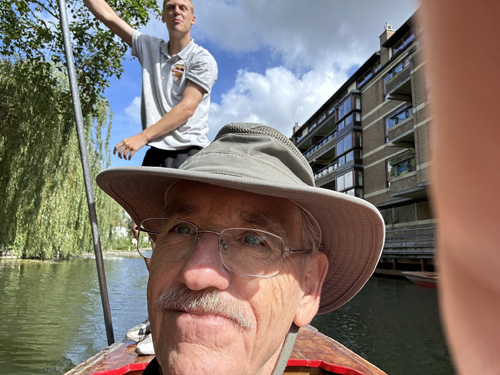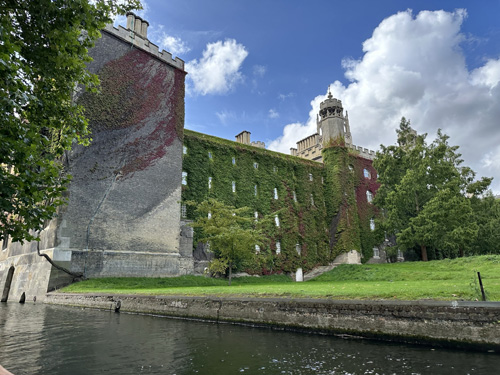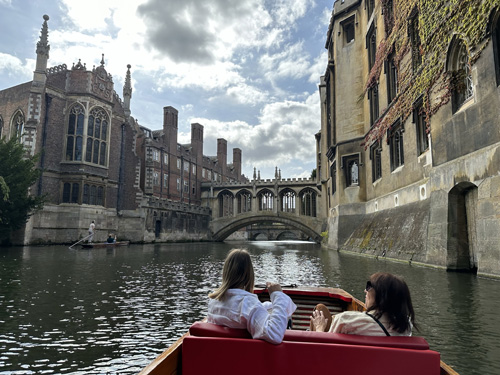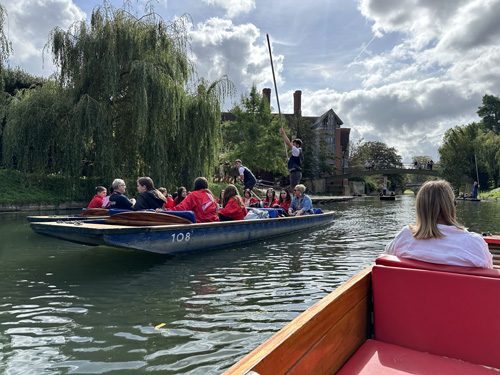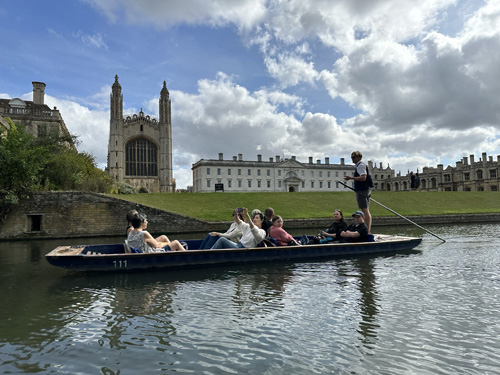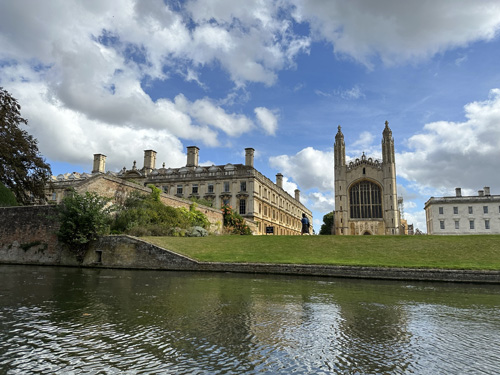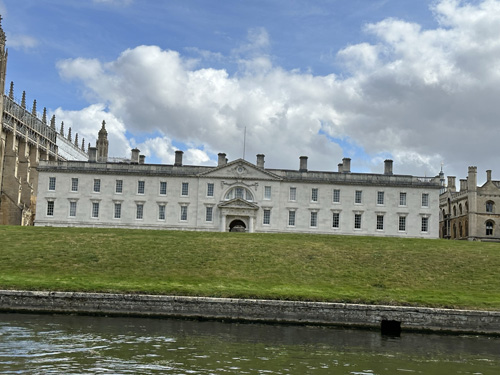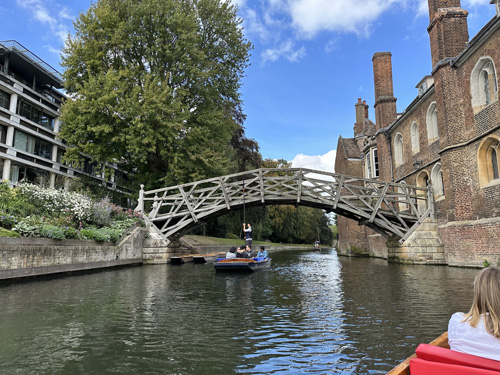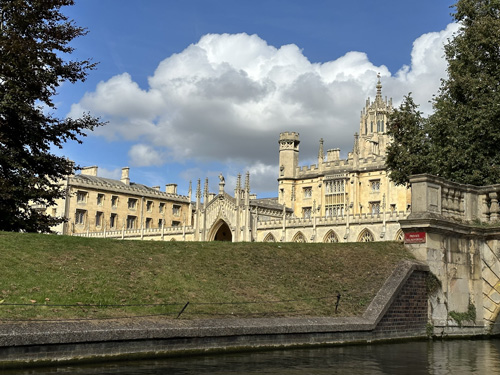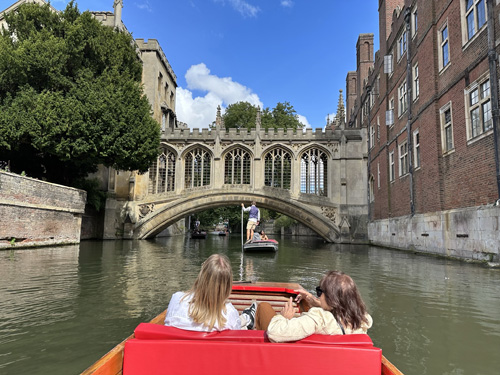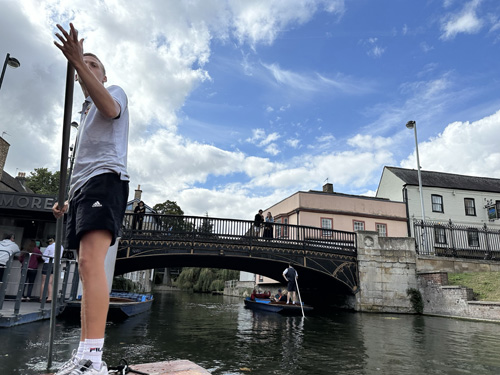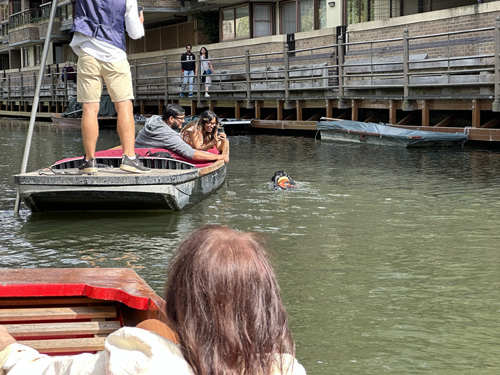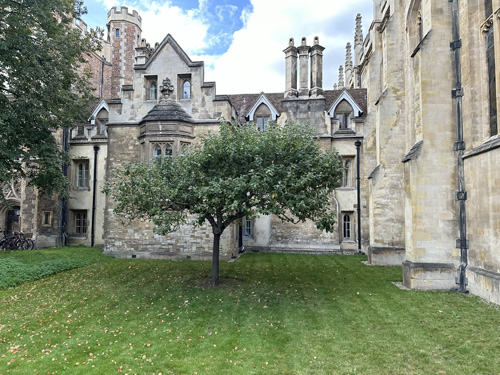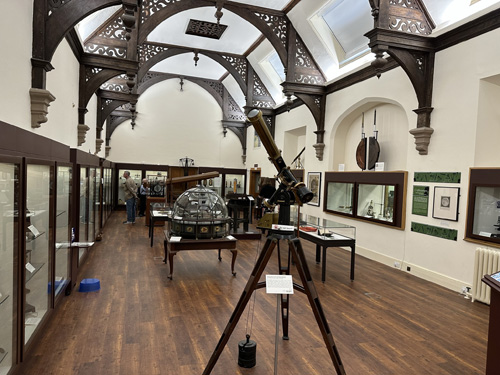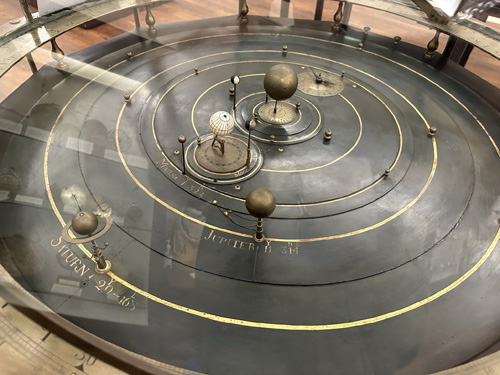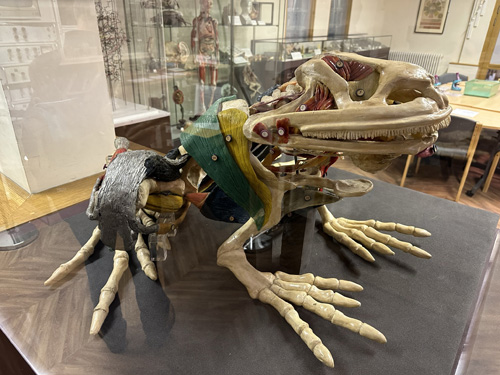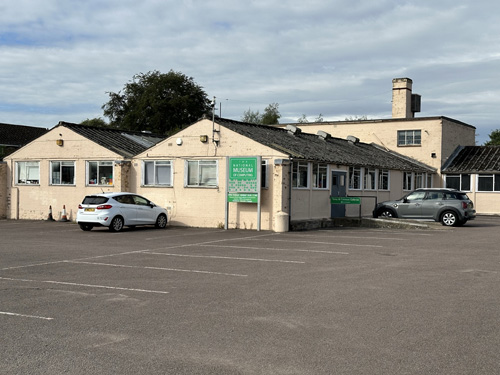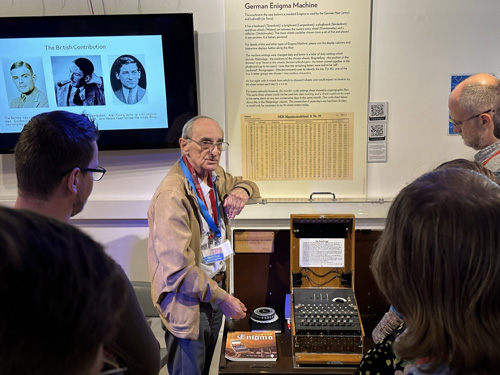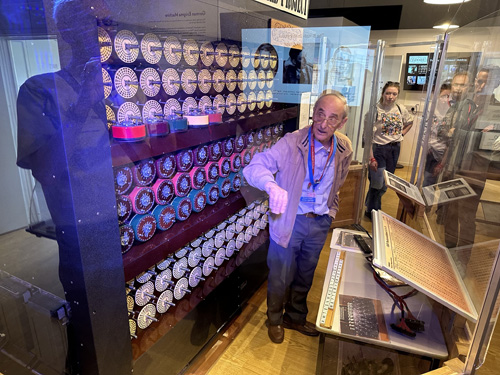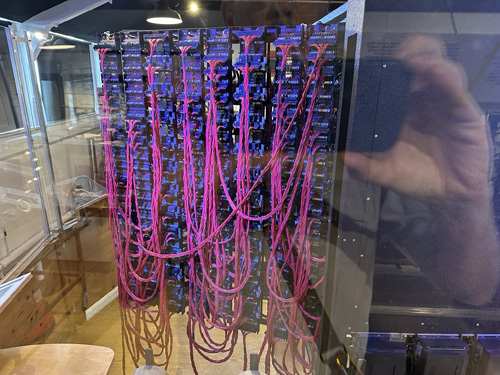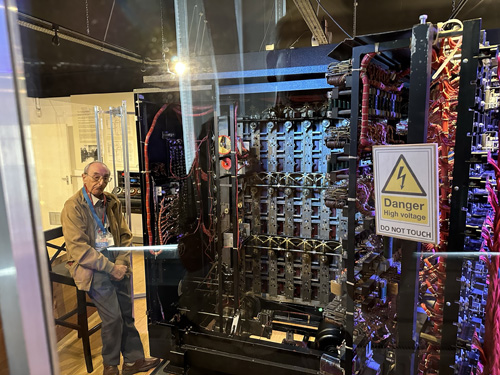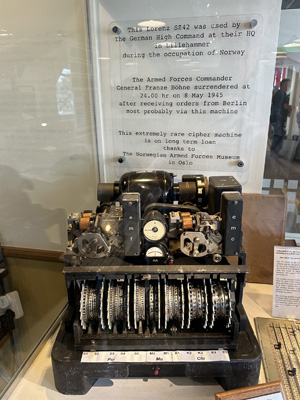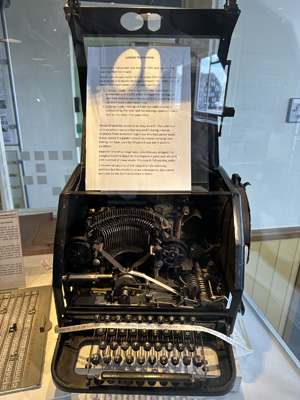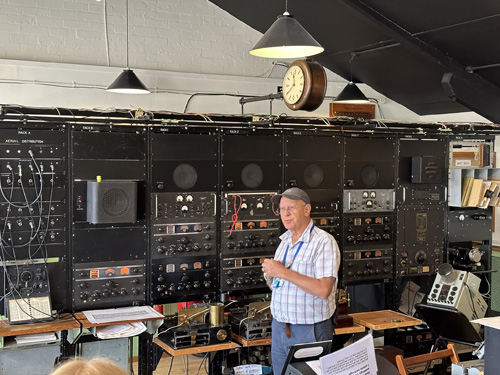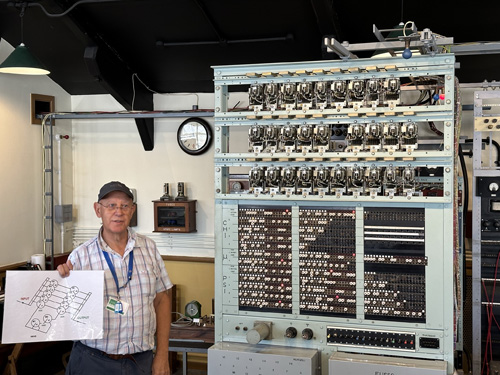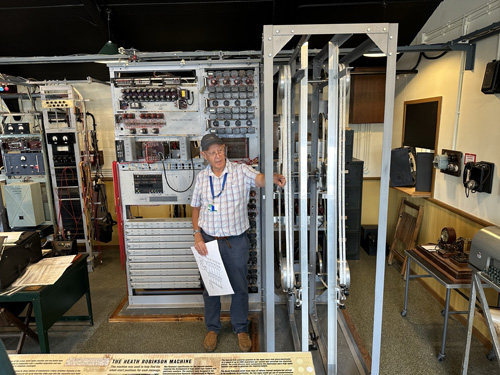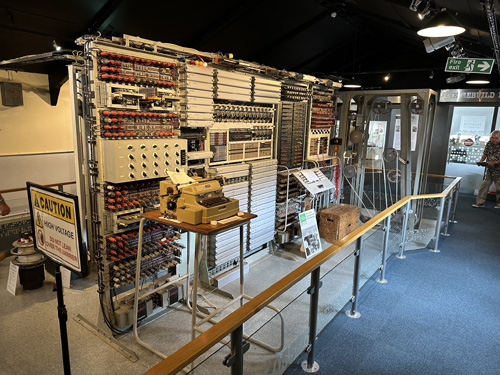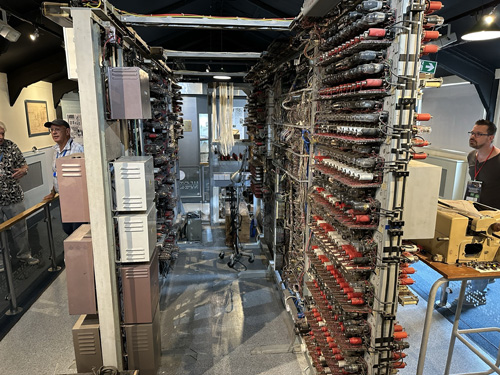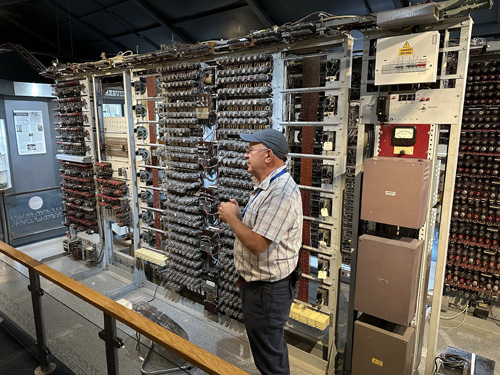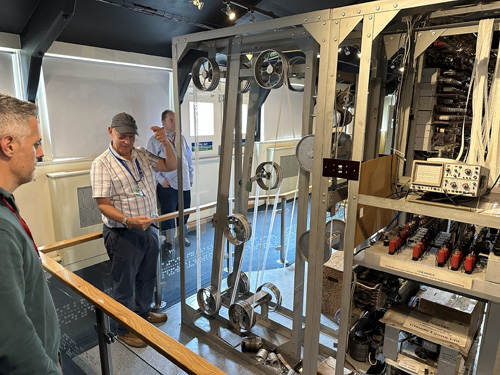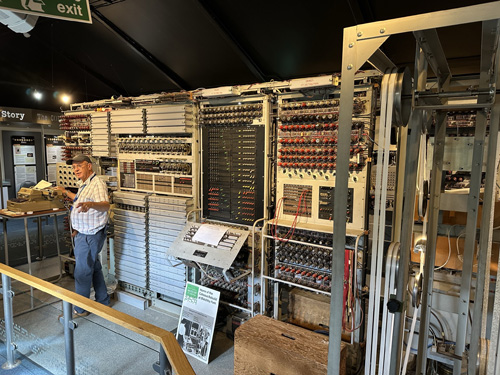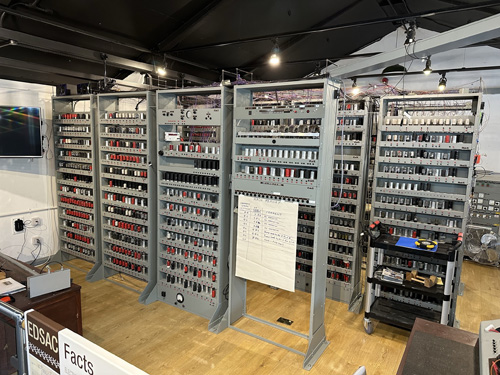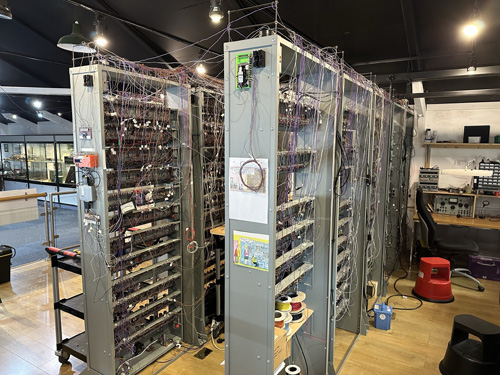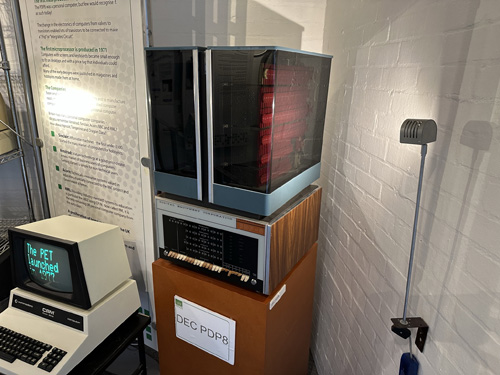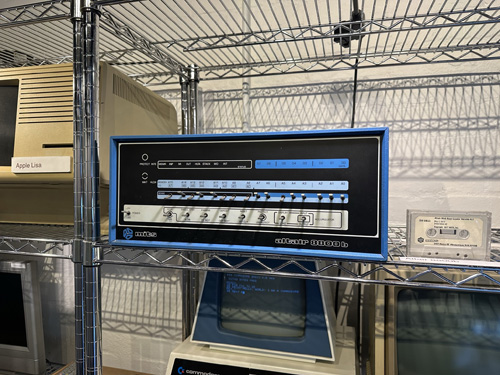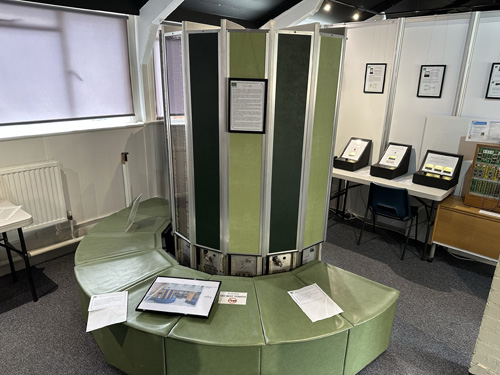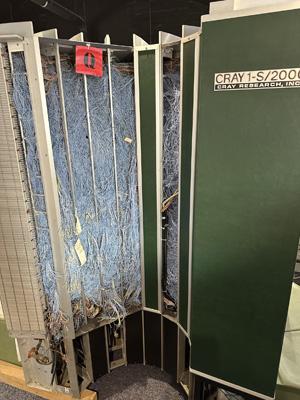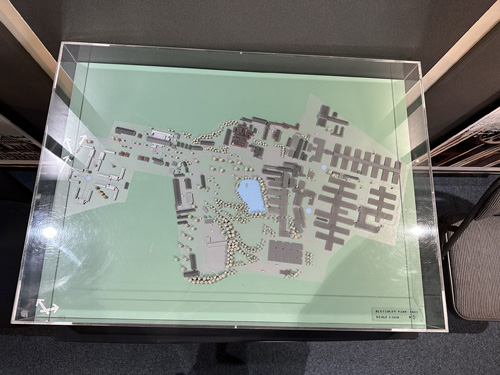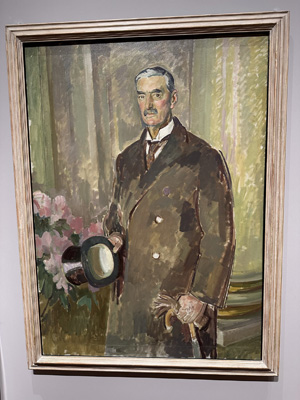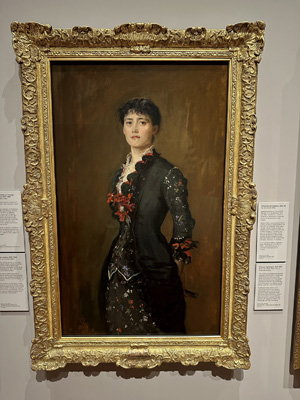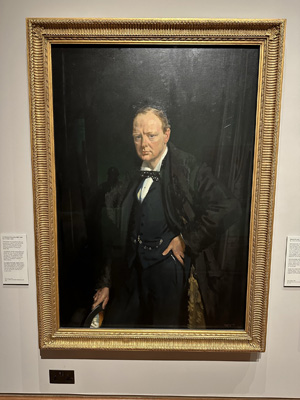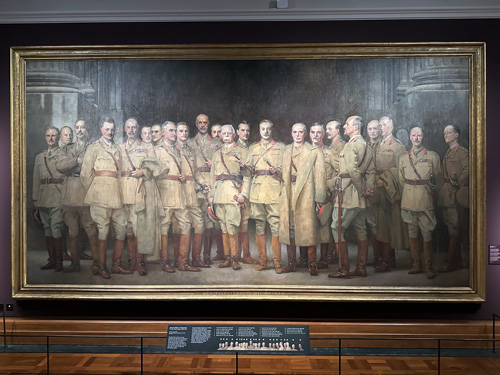Hal Jespersen’s UK Mighty Eighth Air Force Tour, September 2023
This is my (Hal’s) report of a trip sponsored by the National World War II Museum to examine the history and some of the sites of the US "Mighty Eighth" Air Force in England. I have been trying to emphasize more World War II travel and this is my first excursion with the museum. I have arranged this report so that the actual museum tour is in one page, and activities before and after are on a separate page, as follows:
- Activities before and after the Museum tour. (This page)
- Mighty Eighth Air Force tour.
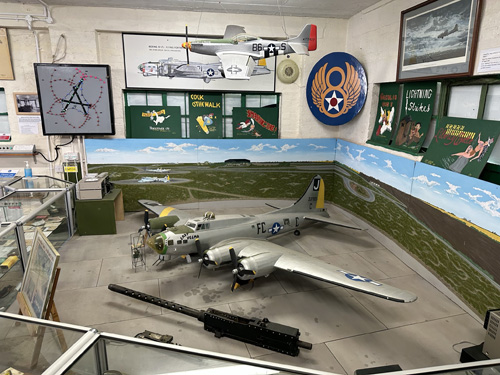
Contents
Monday, September 4 — to London
I flew United Airlines to London Heathrow. The SFO United club, which I was able to get into as a Gold member with an international ticket, had a lot of good food to graze on in advance. I experimented this time with Premium Economy, about half the cost of Polaris business class, and found that it was reasonably decent. The seats are relatively narrow and recline only a little bit more than a standard economy seat, but I was able to get into bulkhead rows in both directions, so was moderately comfortable. Relying on Ambien, a fancy neck pillow, and a premium eye mask, I was able to get four hours of sleep during the overnight flight and thus I adjusted to jet lag pretty well. I did not eat dinner on the plane because I needed to sleep, but the breakfast was quite poor, so I doubt I missed much.
Tuesday, September 5 — London
Arriving at Heathrow I checked into the Hilton Garden Inn next to terminal two; since the tour departs from the airport at 10 AM tomorrow, there was really no way to plan an itinerary that arrived in the UK the same day to be assured of meeting the group. Since I had an entire afternoon free, I took the Elizabeth Line to Paddington Station and walked 15 minutes up the Grand Canal to the area called Little Venice. I booked a 45-minute ride on a narrow boat on Regent’s Canal. If you have ever seen films of London in which there are people living in long, low houseboats on the canal, this is where that happens, and it is an area that I have never visited in my many trips to London. Our guide said that the boats only cost about 50,000 pounds—and a lot of them are very dilapidated—but you have to add rather hefty maintenance/mooring fees, and there is a 25 year waiting list. A lot of rich folks live in mansions overlooking the canal.
We sailed at about 3 miles an hour right through the northern end of Regents Park, which includes a zoo, but we were unable to see any animals close to the canal. We ended up in Camden, which is a very interesting neighborhood that is about 50% bohemian, 50% tourist, with numerous food stalls and souvenir vendors. If it had been lunchtime, I could’ve found at least 20 stalls that had food enticing me, although it would have been very hard to select just one or two. One silly reason I wanted to go through this area was it is the locale of a British TV comedy program Nancy and I enjoy called Trying.
I walked a couple of miles—in rather unseasonable high 80s° weather—to the British Museum, which I had not visited in many years, but found rather uninteresting. I saw the Rosetta Stone and the Elgin Marbles again. Then I walked another 1+ miles to Trafalgar Square and ate in a Neapolitan pizzeria that I read about online, 50 Kalò, which was quite good. They had an interesting wine list that had a number of Aglianico wines from Paestum, which I had sampled and enjoyed last year on my trip to Italy with Stephen Ambrose.
Go to the museum tour page.
Wednesday, September 13 — Cambridge Cavendish Laboratory
I returned to Cambridge to see the legendary Cavendish Laboratory, satisfying some of my amateur interest in the nuclear physics that led to the Manhattan Project. This trip was an easy one with a leg on the underground to Kings Cross Station and then about an hour on the Great Northern Railroad to Cambridge. Once there I did not bother with a taxi and did the 3 mile walk in very pleasant weather, much cooler today than it was last week. The laboratory requires appointments for a one hour unguided visit, so I made mine months ago. Although we passed by the original Cavendish during our walking tour, the current laboratory has been on the newer west campus since the 1970s.
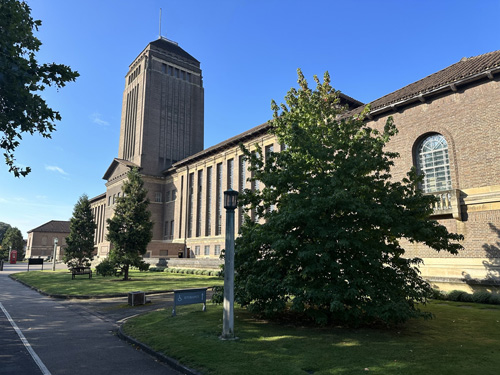
The Cavendish Museum is a rather simple affair, a long hallway on the second floor of the laboratory building, lined with display cases and posters. The exhibits start with a bust of James Clerk Maxwell of electromagnetic equations fame, the first laboratory director, and then proceed to display and explain many artifacts from the early days of electrical science and nuclear physics. Some highlights for me were the discovery of x-rays, discovery of the electron (Thomson), the cloud chamber (Wilson), Ernest Rutherford and alpha particles, the discovery of the nucleus (Rutherford) and the neutron (Chadwick, using a remarkably small instrument). There were also a number of instruments from more modern scientific history, such as electron microscopes, and they made a big deal of course about Crick and Watson’s DNA. There is a long section with annual group photographs of the physics students and I searched through 1924–26 to find Robert Oppenheimer, but for some reason he was not in any of the photos. This visit would not have interested most people, but I found it very satisfying to see the work of the great men of science sort of where they did it.
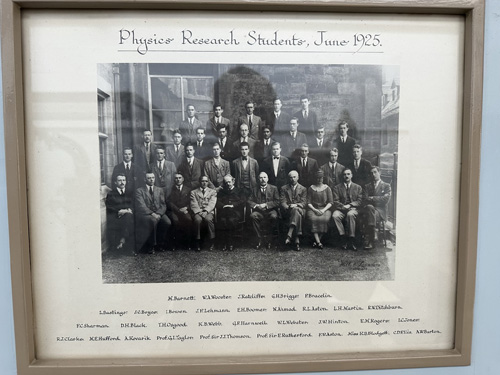
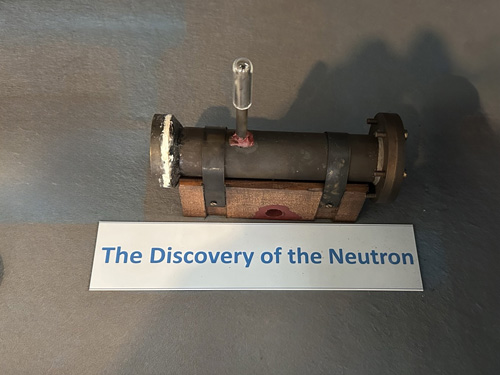
I walked back into town and arranged a 45 minute punting boat tour. These are thin shallow boats with an operator standing up in the rear, poleing, just like a Venetian gondolier. This was a very enjoyable tour with narration and we passed by seven colleges along the river. Some of the highlights were the Bridge of Sighs; Trinity College, established by Henry VIII, the largest and richest of the colleges; Kings College chapel (the second largest chapel in the world, after the Sistine); a long building designed by James Gibbs, which was a partial inspiration for the design of the US White House; the Mathematical Bridge, designed by a student of Isaac Newton; the very first bridge across the Cam River, which gave the town its name. An interesting incident happened with a neighboring boat that carried a couple and their dog. The dog sat mostly still for 40 minutes but then decided to jump out of the boat and swim alongside. The man had to entice the dog back close and hoist him into the boat and endure the typical dog maneuver of shaking out the water onto his human companions. Returning to land, I walked to find Newton's Apple Tree at his alma mater, Trinity College, which is obviously not the same one from 400 years ago, but is supposedly a clone—a direct descendent of his gravity-inspired tree in Lincolnshire.
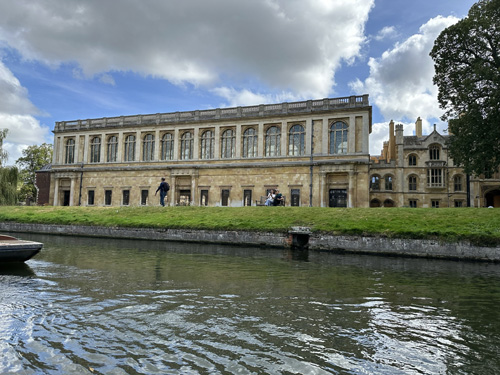
After a lunch in the Market Square, I wandered over to the Whipple Science Museum, which was really nothing special. Whipple owned a scientific instruments company and he assembled a collection of various microscopes, sextants, astrolabes, electrical meters, etc. Then it was another mile and a half back to the train station and a quick ride back to London. I had an excellent dinner of small plates at a Portuguese restaurant not far from the hotel. I pre booked my room at the Rubens for another two nights—rather expensive, but I’m too lazy to pack up and move. A busy day today, racking up 19,500 steps.
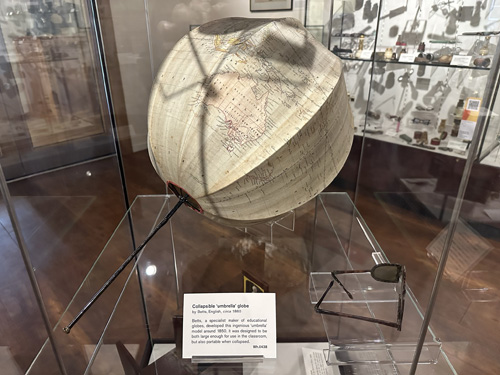
Thursday, September 14 — Bletchley National Museum of Computing
I rode the tube to Euston Station and took the London Northwestern Railway to Bletchley. (The only intermediate stop in the 30 minute trip was the delightfully named Leighton Buzzard.) Even though I have visited Bletchley three times, most recently this week, I had never had the opportunity to visit the National Museum of Computing next door to the code breaking site. (It is actually Block H of the WWII Bletchley site, but fenced off now to the side.)
This is an excellent museum in the first half, which is focused on Bletchley code breaking. I joined a tour being conducted for a small IT group and got very detailed explanations and demonstrations. First was about their replica Bombe and the docent gave us the best explanation I have ever heard or read about how the Enigma code was actually broken. I couldn’t do it myself, but it was crystal clear. Next was dedicated to the Tunney code, or Lorenz cipher, used by the Germans. The guide ran us through how the code machines and teleprinters worked, and then how the narrow-band transmissions were intercepted, showing a big chassis of radios and gear saved from a station in Kent.
Then there was the Tunney machine, which was used to operate like the German device, but with relays and plugboards instead of rotating wheels with cams. Of course, this would only work if the starting positions and cam settings could be found. The “Heath Robinson” machine was initially used to run paper tapes continuously, comparing the cipher text on one with a series of hand-derived settings on the other, at a pace of 2000 characters per second. But this was too slow, so Tommy Flowers developed Colossus, an electronic computer that generated the various settings and compared them with a tape running at 5000 cps. Colossus could derive the wheel settings in only a few minutes, printing them out so that the Tunney machine could be initialized to decipher the message. It was this machine that read the message from Hitler declaring his conviction that the Allies would attack the Pas de Calais. Well, the machine being demoed here was a Colossus Mark 2, which is an operational recreation of a machine destroyed after the war and kept secret until the mid-70s, built up from scratch in 2008. I had a discussion with the docent and he acknowledged to me that Colossus was not a general purpose computer and was not “Turing complete,” so I maintain that the first real electronic digital computer is ENIAC. (ENIAC, completed at the University of Pennsylvania in 1945, was not a stored program computer, but it was general purpose and Turing complete.)
I remarked to one of the docents that it is too bad these exhibits are not incorporated into the main Bletchley Park site itself because it makes it much easier to understand how the code breaking worked, but he explained that back in the 70s there were political battles between the traditional code breaking preservationists and the computer restoration guys and they have never gotten along. The former put up a big steel fence to separate the computer guys and the signage makes very little effort to guide you to the location of the museum. Too bad.
The second half of the museum pales in comparison, attempting to document the history of both mainframe era and personal computers. The large scale equipment is mostly obscure British kit, such as the defunct ICL, although they did have a PDP-8, part of a Cray 1, and a replica of EDSAC, the first stored program computer. The PC stuff was rather mundane. They have an Altair 8800b, which was a follow-on model to the first computer kit I assembled myself in 1976. And of course, an original IBM PC, a Mac, various computer games, etc. For those interested in computer history after WWII, I recommend instead the Computer History Museum in Mountain View, California.
Having some free time, after returning by train, I walked 1.5 miles to the National Portrait Gallery near Trafalgar Square. I do not want to burden this page with too many photographs, so I included only photos that I thought were very interesting or relevant to me. Then it was a mile back to the hotel, in a lovely walk through St. James Park in perfect weather. Dinner was at a casual steakhouse right across the way from that Portuguese restaurant last night.
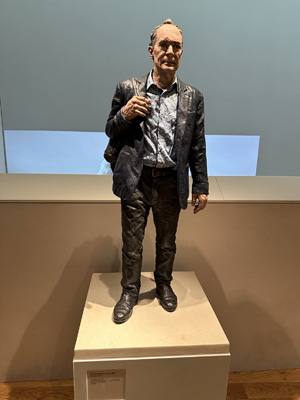
Friday, September 15 — Flying home
I planned to take an Uber to Heathrow. Not the cheapest way to travel, but considerably less than a London taxi and I did not feel like schlepping my bags up and down subway staircases. However, to my surprise, at 5 AM I received a text that my chauffeur was on his way to pick me up at 6:30. Apparently the museum travel staff arranged this as part of the tour package but neglected to inform me or our tour manager Naomi. So I had a nice ride in a Tesla model Y. United has a very good lounge in Terminal 2, so it was a pleasure to wait there a few hours and enjoy an excellent breakfast buffet. The flight back was decent in premium economy. For the first time in my flying career, I purchased an hour of Wi-Fi Internet access so that I could order the new iPhone 15 Pro when the Apple Store opened at 5 AM Pacific time. Although you cannot do streaming, the Wi-Fi on the web and for email did work pretty well.
